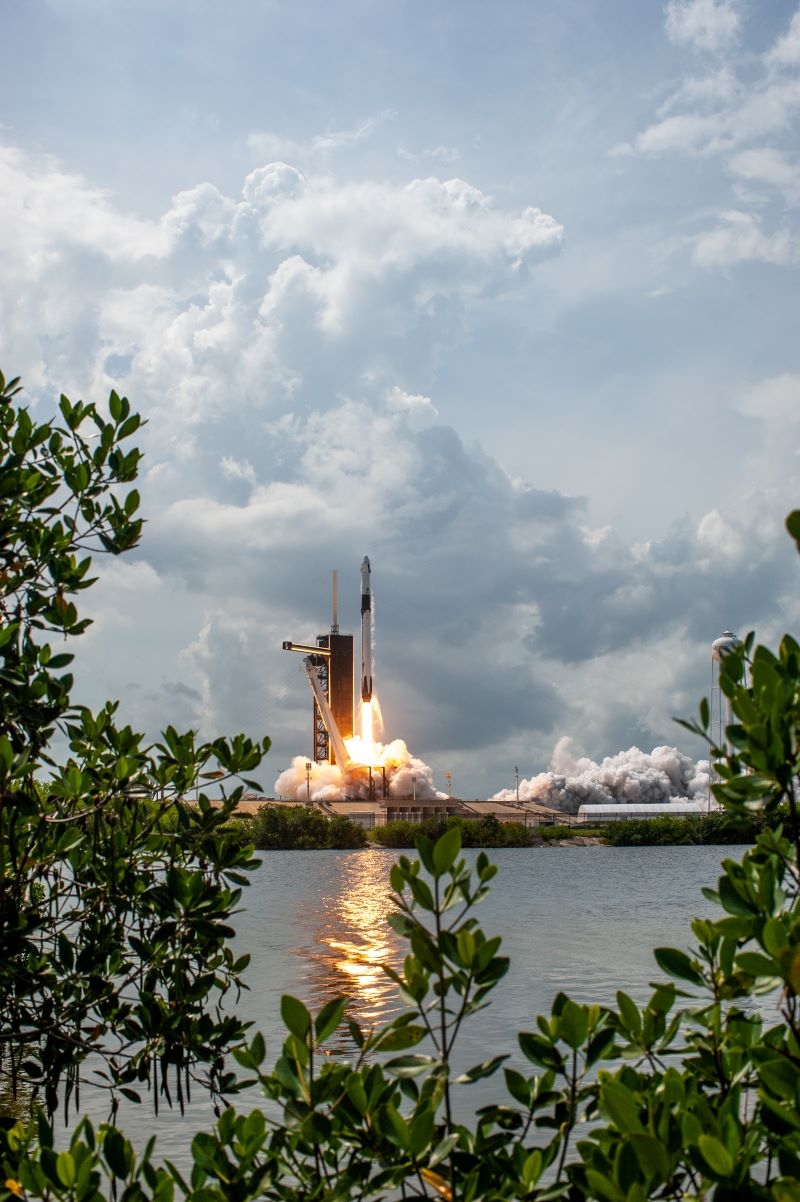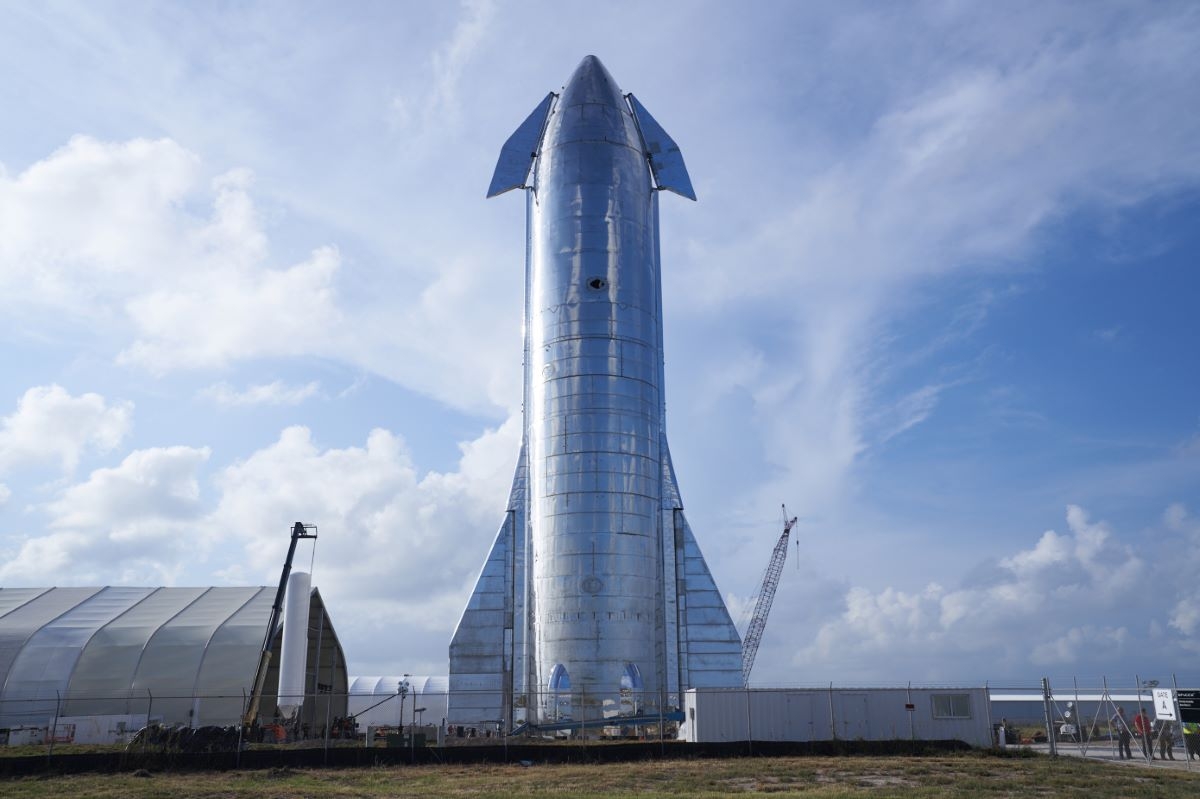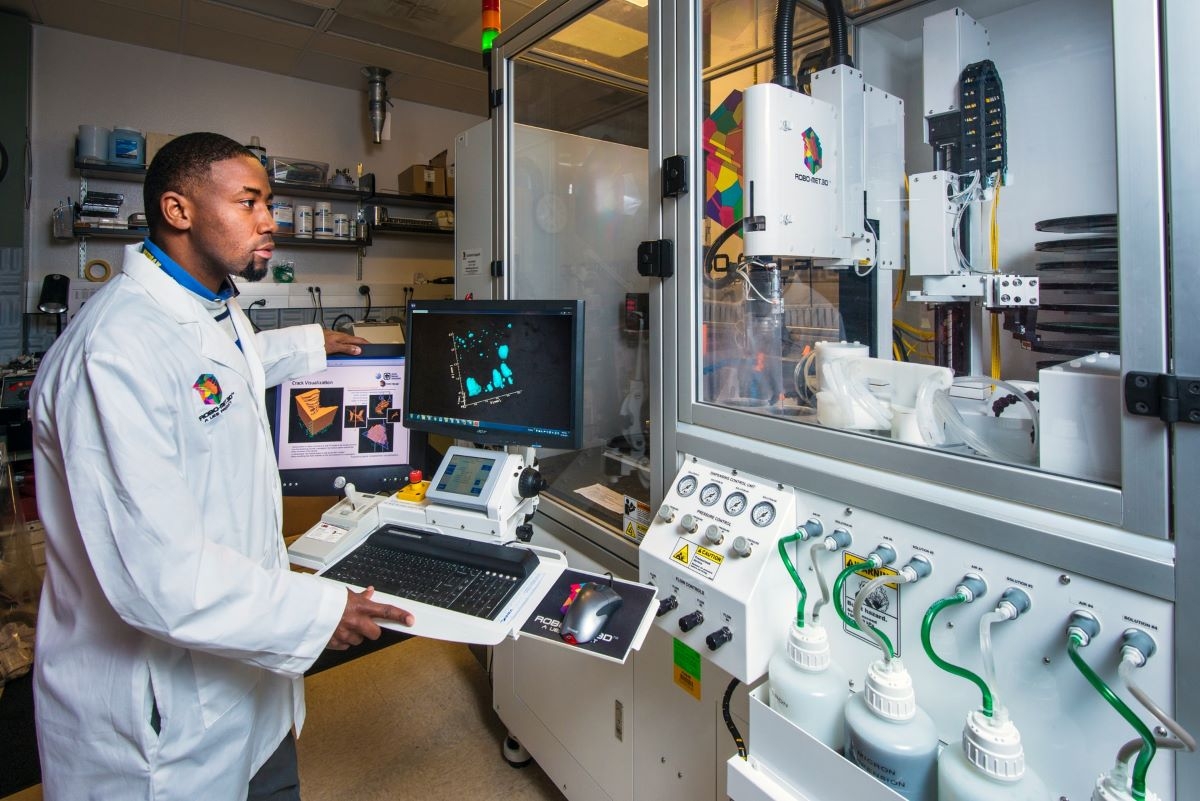
SpaceX and the future of human spaceflight at NASA
Above: The reusable Crew Dragon docking with the Internation Space Station, May 31, 2020. Credit: NASA via YouTube
NASA's human spaceflight program is being widely praised this week, and deservedly so: a reusable spacecraft called Crew Dragon has launched humans to space, the first new rocket to do so since the Space Shuttle, in 1981. But the agency’s plans to send humans back to the Moon still face great challenges.
Crew Dragon is the result of years of testing and development by SpaceX, a rocket company run by famous billionaire Elon Musk. Musk is understandably a big supporter of NASA; SpaceX nearly went bankrupt in 2008 after losing three of its first four rockets before successfully putting its first payload into orbit, and was saved by a $1.6 billion contract with the government for cargo delivery.

Photo: NASA/Tony Gray and Tim Powers
NASA’s plan to invest in private companies to send cargo to the International Space Station (ISS) was a gamble — no private company had successfully built a rocket this way before. Previous NASA rockets were built using “cost-plus contracts”, where NASA covered all of the contractor’s costs for developing the rocket plus a fee. This structure nearly guarantees that a rocket will be built, as seen during the Apollo era, but provides little incentive to produce the rocket quickly or cheaply. Indeed, NASA’s long-in-development Space Launch System (SLS) is still using this type of contract. But the commercial crew contracts are “fixed price contracts”, which paid companies a set amount when they reached a milestone like completing a flight test. This model is less intrusive, as NASA set fewer specifications about how the rocket works, and instead set safety and launch criteria that could be met using a design of the company’s choosing.
Right now, NASA is pursuing ambitious plans to return humans to the surface of the moon by 2024. This course of action began in March 26, 2019 when Vice President Mike Pence called on NASA to send humans to the moon within five years, in a program eventually called Artemis. This major policy announcement occurred outside of normal budget cycles, perhaps in part due to NASA Administrator Jim Bridenstine’s lengthy confirmation process in the Senate, and required an unusual supplemental budget request from NASA to Congress.
Artemis involves creating an orbiting platform around the moon called the Lunar Gateway, with sections sent up in phases until its planned completion, in 2028. Four astronauts would arrive there, then two of the four astronauts would descend to the moon in a lunar lander; last month, SpaceX was one of three companies that were awarded contracts to develop this lander. The Canadian government has signed on to support this project, and among other scientific projects will be developing the Canadarm3 for the Gateway. Canadarm3 will be vital, since the Gateway will not be continuously crewed like the ISS currently is, and will need to be maintained somewhat from Earth.
The goal of 2024 for putting astronauts on the Moon once more is incredibly ambitious, especially being announced after the 2018 midterms, when the incumbent Republicans lost control of the House, and lost some ability to direct NASA’s spending. Five years is a very short turnaround time for a new human mission to space, requiring complex and expensive changes at NASA, an agency that often takes over a decade to plan, design and launch a satellite, let alone humans. (Vice President Pence referenced this “complacency” at NASA during his 2019 announcement speech, though it remains to be seen whether his administration can sufficiently shake up the agency.)
The year 2024 is also notable because incoming presidents tend to change their predecessors' plans for NASA. That makes it hard to complete such a large mission, an issue that Artemis theoretically won’t have if Trump is reelected this fall. But on the other hand, Democrats have noticed that completing this mission within Trump's hypothetical second term would give him a "win" of sorts, and several have questioned why the launch date must arrive so soon. According to the Planetary Society, a space advocacy group, Congress probably needs to provide $4-5 billion more in funding each year in order to achieve the moon landing on time.
While SpaceX is doing some work on the mission, the aforementioned SLS, a non-reusable rocket NASA is developing for major missions beyond Earth orbit, is the main rocket being used for project Artemis. SpaceX will keep developing its Starship rocket, similar in capabilities to the SLS, largely without direct funding for that project from NASA, using extra funds earned from rocket launches for other companies and hopefully future earnings from its internet space constellation, Starlink.

Photo: Darrell Etherington
This lack of direct funding isn't a deal-breaker — the Falcon heavy rocket, which famously sent Musk's Tesla into space, was not a directly funded NASA project either, and now NASA can buy a ride on this rocket without having to fund its construction for once. But if Starship successfully launches in the early 2020s and starts completing missions, as SpaceX plans to do, all of that money spent on the far more costly SLS will seem a little foolish in retrospect.
NASA's approach is somewhat reasonable: the various build sites for SLS all over the country which now have Senators and House members fighting to keep the project going could be seen as government waste organized by special interests, but that also makes the rocket hard to cancel. SpaceX's rise has been impressive, but Starship doesn't exist yet, and its most recent Starship prototype just exploded, suggesting that it might be a while before the ambitious rocket flies. SLS ensures that NASA has a guaranteed way to launch major projects throughout most of the solar system, even if it takes years and costs billions of dollars.
So, while humans fly to the ISS again on a new rocket this month, President Trump probably will not put men on the Moon again by 2024. The expensive, sudden project is unlikely to receive funds from a skeptical Democratic Congress to be for such a quick turnaround.
I’d like to be wrong, but mostly I just hope the next president doesn't cancel the existing Moon mission once again. NASA wanted to return humans to the Moon by 2028; achieving that goal might be the best possible outcome.









